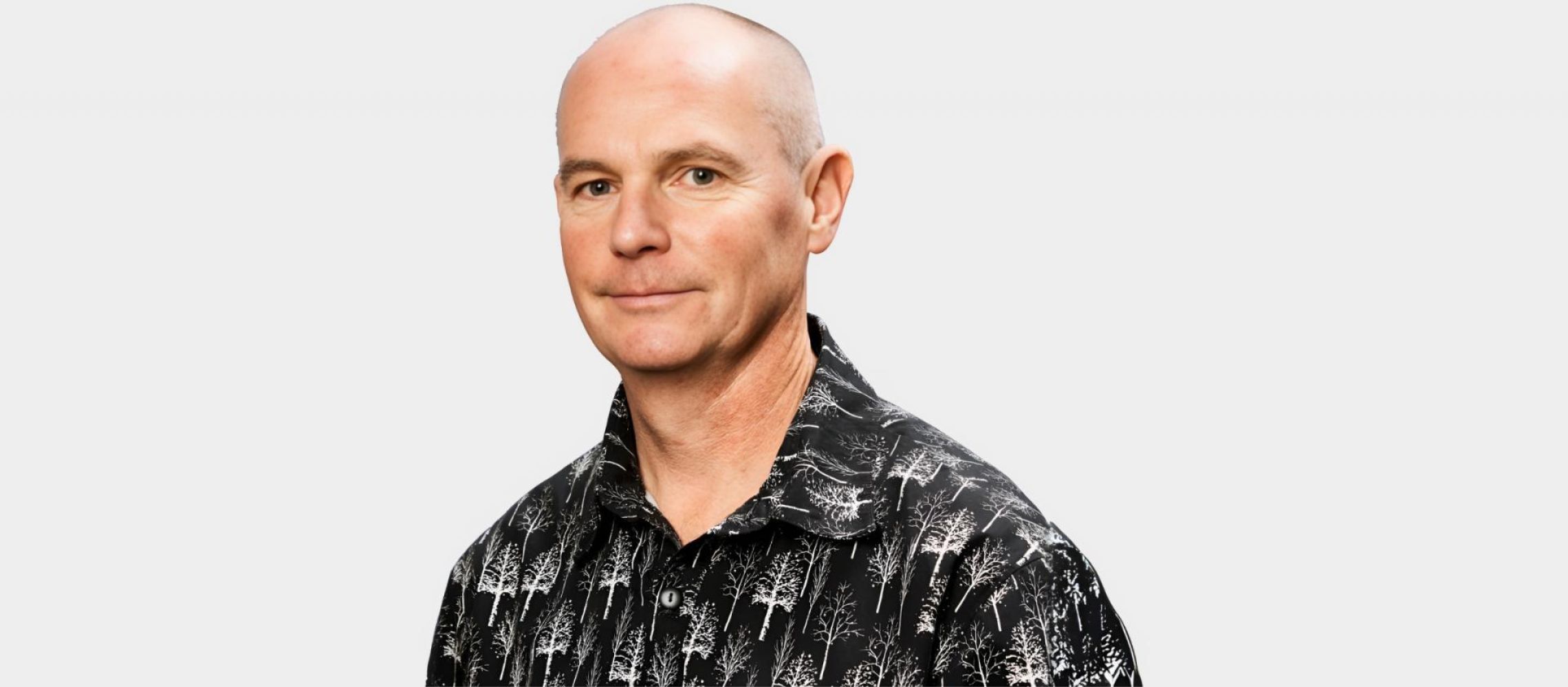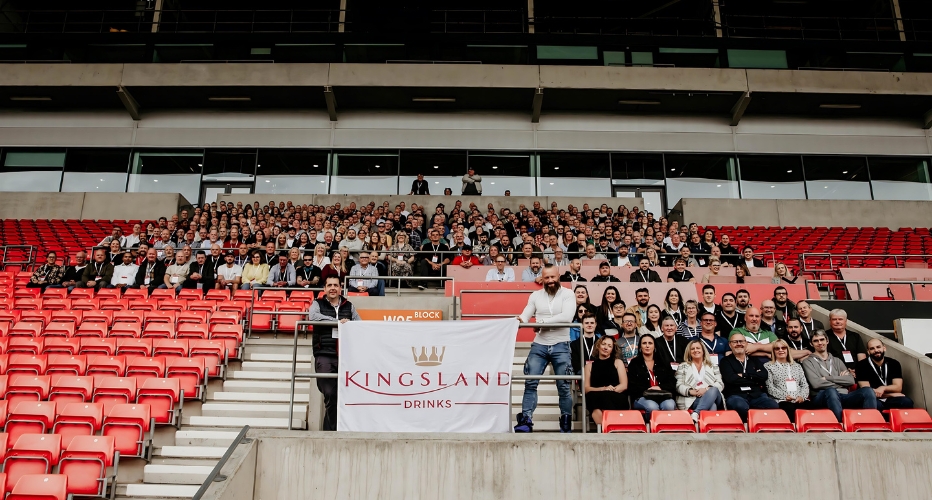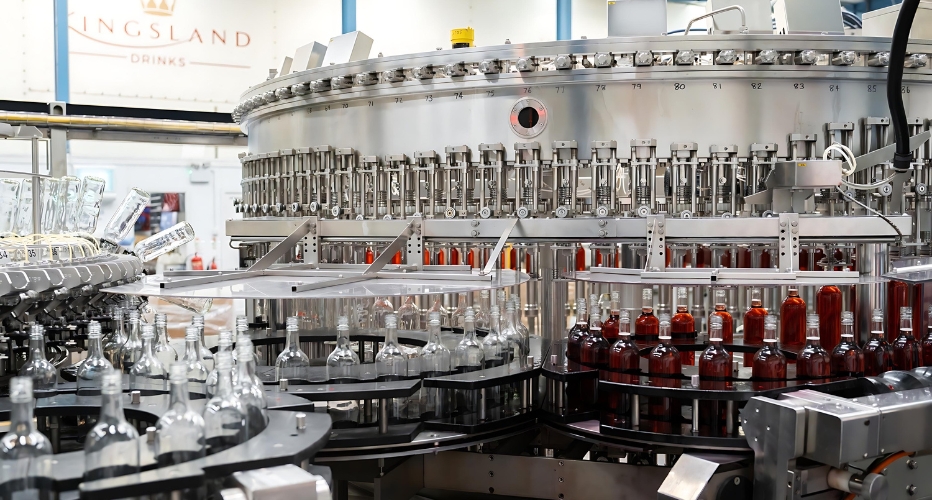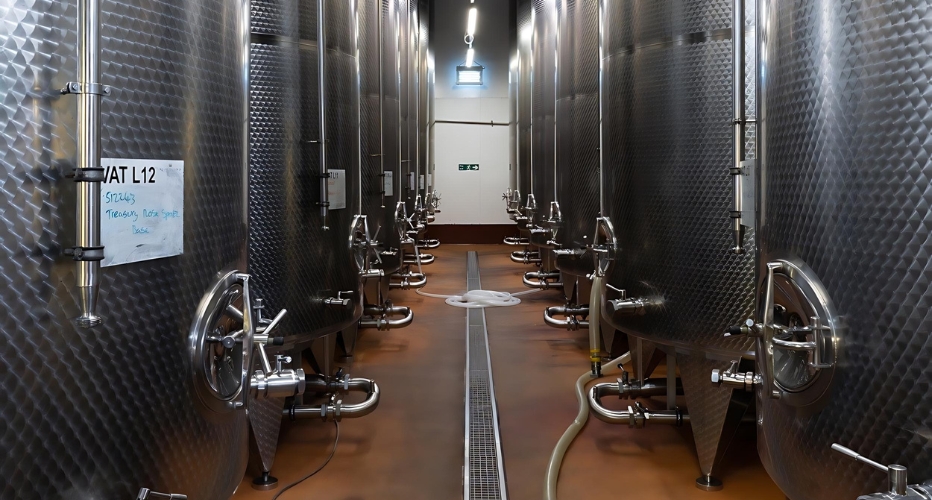Early Bird Deadline
30 November 2025
Judging
Date
23 & 24 March 2026
Winners Announcement
22 April 2026
30 November 2025
23 & 24 March 2026
22 April 2026

In the dynamic and ever-evolving UK wine market, Kingsland Drinks has established itself as a key industry leader, setting the benchmark for quality, sustainability, and value. Their success is underpinned by an unwavering commitment to meticulous planning and rigorous preparation. Every facet of their operations—from stringent quality control measures to highly efficient logistics—is carefully orchestrated, ensuring that the journey from vineyard to glass is seamless, even before a single tank is shipped.
In this interview with David Gill MW, Wine Ambassador for Kingsland Drinks, we delve into the sophisticated strategies that have positioned Kingsland as a trusted partner for retailers and consumers alike. David provides insight into how Kingsland navigates the shifting tides of consumer preferences, particularly as the demand for lower alcohol by volume (ABV) wines continues to grow. He also addresses the rising trend of no- and low-alcohol options, an increasingly important segment within the industry. Through a thoughtful blend of innovation, sustainability, and a deep understanding of consumer trends, Kingsland Drinks remains at the forefront of shaping the future of the UK wine market.
There are several key pillars on which this type of business is built and sustained. The key to everything is to ensure the hard work is done before a single tank is shipped.
Quality: No one wants unnecessary problems, questionable products, or constant changes.
a) Quality Control from the origin
b) Quality Assurance through the process
c) Reliability of system, logistics & finished product
Partnership: Unity of purpose for all stakeholders & participants
a) Agreement on all basic protocols
b) Thorough planning
c) Clarity of communication
d) Focus on best outcomes in dynamic situations
Sustainability: We all want to adopt best practices at every turn & need suppliers & clients alike to be on that same journey
a) Environmental
b) Ethical
c) Technical
d) Commercial & Logistical
Value: The right price for the right job

Image: Kingsland Drinks - Employee Ownership (EO) Day.
Specifically in wine: The putative duty changes for next February (by ABV) are creating a move towards lower ABV wines. Some of them are good, but many are just “needs must” and don’t deliver a good consumer experience.
There is simultaneously a current trend for higher-sugar wines – red, rosé & white. Some of that is to fill in the hole of “missing” alcohol (re above) but most of it is simply brand-led for commercial reasons. It helps large producers to use cheap wine to create a strongly marketable and reasonably consistent palatable product. Personally, I find this a bit depressing and it’s certainly to the detriment of a lot of good quality wines which can’t get shelf space and whose style and flavor are being drowned out by sugary confections.
Much of what will trend in the next year here will depend on the new Chancellor’s budget. Lower ABV wines (10 – 11% rather than 12+) are already here and set to grow. Consumers need consistent quality at the lowest possible prices (in every product category). They also want to feel they are being protected and as ethical as possible. Therefore, for wine, supermarket own-label will do well and that could help the retail buyers to experiment a little with more interesting wines, as well as championing the established core range.
That said, there is a significant market for more “glamorous” products, whether it is celebrity-endorsed wines or simply premium quality / good value wines in premium packaging. Everyone needs a treat and Millennials seem quite clear about what works for their various “tribes” and for different occasions.

Image: Kingsland Drinks, bottling and packaging facility.
I’m not convinced that “No-Alc” wines are an actual trend. There is new shelf space and there are undoubtedly new drinkers buying these products, but – for the most part, if you buy wine normally, a Zero alc option just doesn’t cut it. If you don’t drink alcohol, then an expensive No-alc wine is the least good option of what’s available, certainly when compared to beers, ciders, and mocktails.
There is also a question mark over what constitutes “Lower”. With the current duty regime, 11% is the magic number and there is good wine out there at this level. Once you start dropping the ABV further then it is less wine-like and often sugary. And at those lower levels, there is the issue of when something stops being wine and becomes an ersatz product.
So I am not convinced Zero-alc wines will gain much extra traction and the same is true for the 5 to 10% product area. However, again, much may depend on the autumn budget.
I don’t feel that qualified to answer this question, but it seems to me that there are many Gen Z Non-drinkers, many who like sugary confections &/or “power” & energy drinks – with or without alcohol. Many like anything they can photograph & put on social media and/but there are not that many who are into wine.
In many ways, consumers are only “interested” in something that gets shelf space and promotional activity. It’s the retail buyers - the gatekeepers - who control the flow of new ideas and “undiscovered” regions onto the shelves and thus into consumer awareness. They walk a fine line between leading their consumers/being innovative and ensuring their shelf space earns maximum profit. They tend, therefore, to be a little behind the curve of what is available to them and what their customers would be genuinely excited by.
That said, we have seen the steady progression of listings and sales for Portuguese, Greek & Austrian wines from previously tiny bases. Eastern European countries are providing some glimpses of their potential, either as inexpensive core listings or more premium parcels and there are “discoveries” still being brought to market from Italy.
The USPs for each country are quite different.
Spain has a tight mix of brilliant “classic” regions like Rioja, Rias Baixas, and Sherry, juxtaposed with a wealth of relatively inexpensive but generously styled wines from other regions. Many of the red wines from those regions are styled to look like Rioja for the UK market. Ironically that does nothing to promote those new regions, while it serves to confirm Rioja as the premier quality region in Spain. The improvement of viti and vini techniques is making inexpensive Spanish white and rose wines more drinkable and more marketable and that has helped open up Spain to new consumers, especially for varieties like Verdejo. Cava’s reputation was near-ruined here by over-aggressive commodity pricing in the supermarkets in years past. There has been a little revival recently, on the back of Prosecco slipping back a little, so it will be interesting to see if Cava can make a new more premium niche here, in the same way as Cremant from France has done.
Portugal has been very much on the up here, with some early breakthroughs a few years ago being driven on by newer, big-volume brands like Porta 6. There has always been plenty of good value and interesting wine there, but consistency and reliability had been an issue – at least until fairly recently. Now there is more scope to expand on the successes, with new varieties, regions, and flavours being proposed to take advantage of any listing opportunities.
As for Argentina, they do have a bit of an issue with Malbec as it encourages the image of Argentina as a “one trick pony” for UK consumers. They have plenty of other good reds, but nothing has so far gripped this market, not least because the better wines are fairly expensive. They have also struggled to provide an eye-catching white option of any magnitude, but Argentina will continue to do well while the Malbec wave continues.
As I alluded to in my answer to your 1st question, quality control & assurance are developed by ensuring everyone in the chain knows what is expected of them from the start. Clarity of communication, adherence to agreed systems and protocols, and robust audited processes are all key to this, as is full traceability.
Kingsland has an industry-leading Technical team who have developed processes that ensure that whatever we agree to buy, arrives here in the correct state. All the hard work is effectively done before a tanker or bottle leaves the producer.
As for the blending process, that necessarily depends on who owns the brand/IP for each product. For our own, high volume core wines, our highly-skilled Wine Development & Buying team will have worked with the producers on the wines at an early stage and will have agreed on the protocols for sliding blends across a year, for vintage changeover and, should the need arise, for blend extensions mid-year due to unexpected sales spikes. We spend a lot of time checking products over the year and also benchmarking against competitors & other producers. New products that require some element of “design” will have been worked on in the tasting rooms at source and at KDL so that we ensure the best possible wines with the best consistency.

Image: Kingsland Winery.
I suspect that increased alcohol taxes will create both issues and new opportunities here. It’s hard to predict what the opportunities will be until we see the shape of the taxation, but the growth of lower ABV wines is likely.
Packaging is also under the microscope so expect new ideas to pop up and some older innovations to resurface. The barriers to success are many so there’s unlikely to be a dramatic overnight change but trends will start to appear, depending on what consumers will accept and pay for and what is quick and relatively inexpensive to implement.
Above all, I fully expect alcohol consumption to continue to fall and for tax revenues to the government shrink every time they tax it more!
I can’t answer this too fully as we have some terrific development plans. However, Kingsland is uniquely placed to be able to be the leading Wine Brand Facilitator in the UK. There is no limit to what can be achieved when we don’t mind who takes the credit.

Image: Kingsland Drinks
Oh, so many things. I have been in this game for over 40 years…
Obviously becoming a Master of Wine – I was only 28 and had been on the steepest learning curve to get there. I then spent the next 7 years at the forefront of developing the MW Education system from UK-only informal “revision course” sessions to something both international & far more structured & tangible. I have also continued to mentor MW students, a highly rewarding experience.
As a buyer for Waitrose in the early ‘90s, I brought in an exciting range of wines from Eastern Europe which was (is) so far ahead of its time. Part of that was bringing in a brilliant & highly successful Pinot Noir from Romania in bulk – not something that had been done there before and which I had to work out from scratch.
When I moved to Bottle Green Ltd in the late 90s I was blessed to work with some of the world’s best winemakers IMHO – the sort who fly under the radar and are the unsung heroes of the wine trade. Their work, harnessed with the Bottle Green team’s creativity, commerciality, and sheer hard work created a hothouse of wine successes over 20 years. As part of that, I developed the French Connection brand which, in its heyday, was listed in most major retailers and had a substantial consumer following. There were many other successes, but that one is probably my favorite.
Finally, with Kingsland, I have been able to start to pass on my knowledge & skill set to a new, younger generation of the wine trade. That is as rewarding as anything I have done.
Above all, whatever I have achieved, it has been by standing on the shoulders of giants, to whom I send my humble gratitude.
[[relatedPurchasesItems-38]]
As the UK wine market continues to evolve, Kingsland Drinks remains well-positioned to lead. With a strong emphasis on quality, sustainability, and value, the company is adept at meeting the shifting demands of consumers while maintaining rigorous standards. David Gill's extensive experience and strategic insights highlight how Kingsland Drinks not only adapts to market changes but also anticipates future trends. Through careful planning and a commitment to excellence, Kingsland Drinks is set to continue its success in the ever-changing wine industry.
In conversation with Malvika Patel, Editor and VP, Beverage Trade Network
Show your wines where it matters. Get your products tasted by top sommeliers, buyers and experts at the London Competitions — enter now.